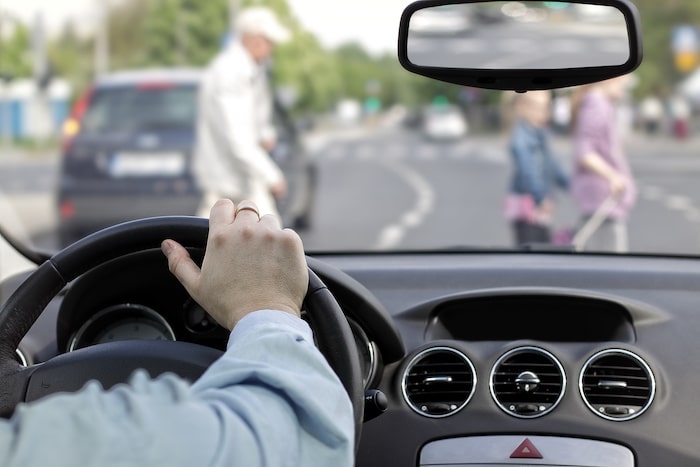Do Pedestrians Always Have the Right of Way in Florida?
Every driver’s worst nightmare is to be in an accident, especially one that involves hitting a pedestrian. Pedestrian accidents are some of the deadliest accidents right next to roll-over accidents, head on collisions and bicycle accidents. You’ve most likely heard the saying “pedestrians have the right of way”, and while this is true in some incidences, pedestrians also have an equal responsibility to pay attention to the road and their surroundings to stay safe.
What is a Pedestrian?
Many people assume that if you are not operating a motor vehicle then you are a pedestrian, but this is not the case. A pedestrian is anyone who is on foot as well as in a wheelchair or using rollerblades or skates. A bicyclist is not a pedestrian as they are operating a vehicle and are required to observe the rules of the road like observing traffic signs, signaling turns, and equipping safety features such as helmets, reflectors and/or lights.
Who has the Right of Way?
The answer is technically no one. Florida law only states who must yield, or give up, the right of way. It is the responsibility of all parties to do everything they can to avoid an accident. But there are rules in place to help both pedestrians and drivers understand when they need to yield to one another.
Pedestrians and Crosswalks
Pedestrians generally have the right of way within marked crosswalks, but vehicles are only required to yield to pedestrians who have reached or are quickly approaching the halfway point. Additionally, the pedestrian cannot enter the crosswalk at a time when it would create an immediate threat to them and the driver, such as if a vehicle is nearly at or passing the crosswalk. There are two instances when a motorist must yield to a pedestrian, and that is when they are crossing at an intersection with either a marked or unmarked crosswalk, and when they are crossing at a mid-block crosswalk, unless it is at an adjacent signalized intersection.
Adjacent Signalized Intersections
Florida statute §316.130(11) states that a pedestrian may not cross in mid-block between adjacent signalized intersections. This means that they must only use marked crosswalks when crossing between adjacent intersections controlled by traffic signals. So, if there are two intersections near one another and one is controlled by traffic lights and the other is controlled by stop signs then the pedestrian is legally permitted to cross mid-block without using a marked crosswalk. If both intersections are controlled by traffic lights, then the pedestrian is legally required to walk to the next marked crosswalk before they are able to cross the street.
Pedestrians and Sidewalks
If there is a sidewalk provided then a pedestrian is required to walk on it, meaning you cannot choose to run or walk on the road. If there is no sidewalk then pedestrians are permitted to walk on the left-hand side of the road, or on the shoulder, facing traffic. By walking in the direction that faces traffic, the pedestrian is able to see any approaching vehicles and jump out of the way if a vehicle is heading towards them. Walking with your back to traffic would leave the responsibility to the driver to ensure the pedestrian’s safety, and many motorists are distracted by smartphones or passengers.
When Do Pedestrians Not Have the Right of Way?
There are several instances when a pedestrian does not have the right of way and is required to yield the right of way to the person operating a vehicle. They are as follows:
- Crossing a roadway at any point other than a crosswalk, unless the pedestrian has already entered the roadway under safe conditions.
- Crossing a roadway at a point when there is an overhead walkway or tunnel provided for pedestrian use.
- Suddenly leaping out into the road. Pedestrians are not permitted to suddenly leave a curb, sidewalk or other places of safety to jump in the path of a moving vehicle at such a close distance that a driver would be unable to yield.
Safety Tips for Pedestrians
- Always walk on the sidewalk, if one is available.
- Always cross the road where pedestrians are expected to, like at a corner or on a crosswalk.
- Always look both ways when crossing the street, whether or not you are at a crosswalk.
- Never enter a roadway from between parked cars where oncoming motorists cannot see you.
- Wear bright, reflective colors that are easily visible, and always carry a flashlight when walking at night.
- Be aware of your surroundings at all times. Avoid wearing headphones so that you are able to hear traffic and other pedestrians around you. Never text or look at your cell phone when crossing the street.
- Follow all pedestrian signs and signals. When a crosswalk signal is red or says, “Don’t Walk”, yield right of way to all vehicles and wait until the signal changes and it is safe to cross.
If you or a loved one has been involved in a motor vehicle-pedestrian accident, do not hesitate to call Armour Law Group, Orlando Personal Injury attorneys, who can look over your case and advise you of your rights.


Recent Comments